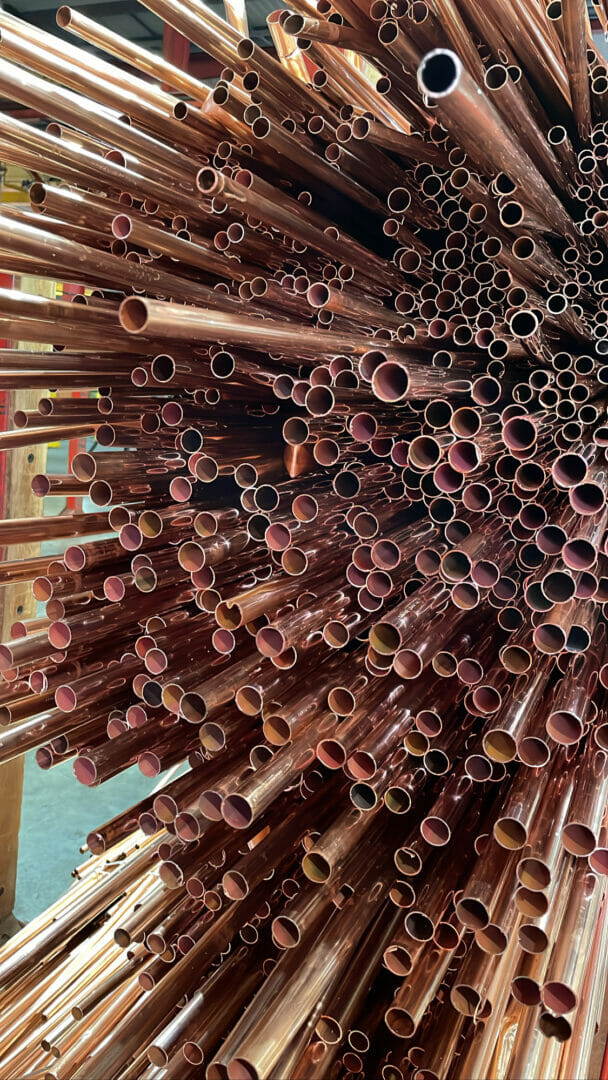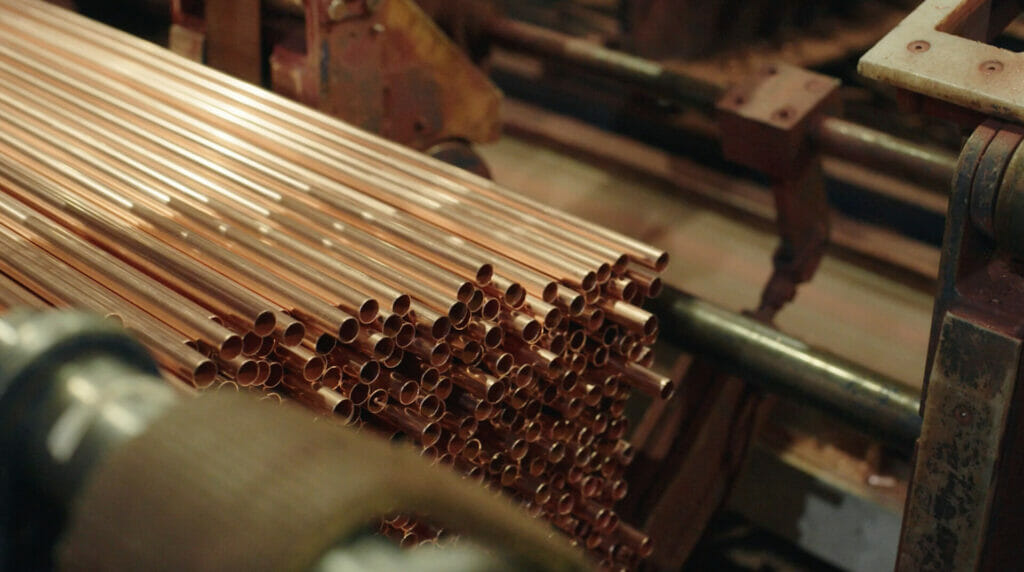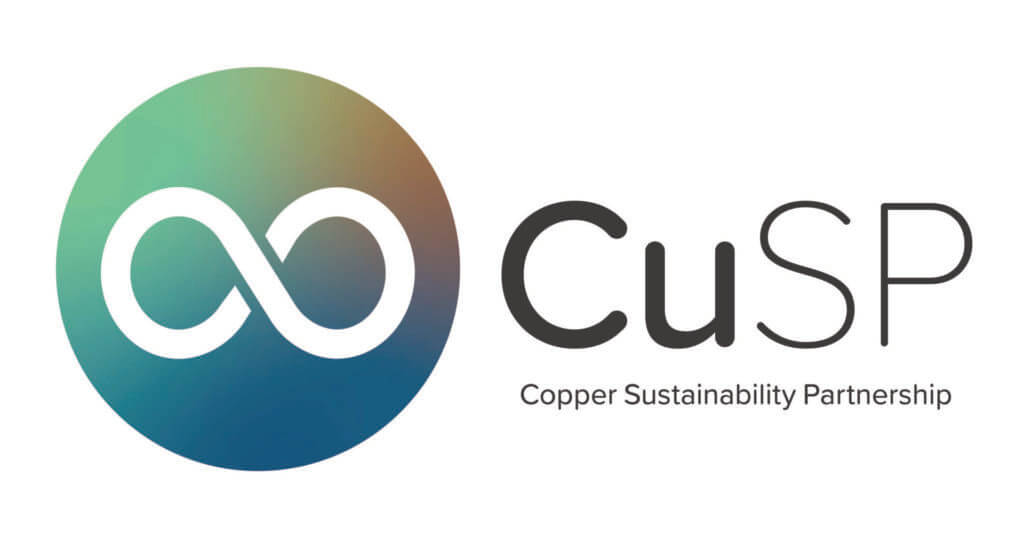
According to the Climate Change Committee, 85% of residential buildings in the UK – equating to 23 million homes in total – are connected to the gas grid and have gas transported through them via a tubing network.
With so many households having these networks, and with the climate emergency ever worsening, using sustainable materials is of utmost importance.
There are several different options when it comes to gas pipes but unfortunately, we are seeing a rise in unsustainable options such as corrugated stainless-steel tubing (CSST), which is made up of stainless-steel tube coated with either one or two layers of PVC plastic. Due to the inclusion of two different materials, this makes the recycling of this type of product very difficult.
Another option for gas piping is copper, which is infinitely recyclable and has been the professional plumber’s choice for decades. So, what is it about copper that makes it the sustainable, superior option? And just how damaging is CSST to our planet and our people?
A question of sustainability
Generally, at the end of their life, CSST pipes are landfilled or burned as they hold no recyclable value. This is largely due to their complex makeup as it is very hard to separate the metal from the plastic layers. The process to reclaim the metal sandwiched within the plastic would be incredibly labour intensive and costly, outweighing any value that could be retained.
According to the World Wide Fund for Nature (WWF), plastic can take hundreds of years to breakdown, meaning that several generations of a family can live in the time it takes for one landfilled pipe to disintegrate.
While it is possible to recycle plastic and it should be done wherever feasible, Zero Waste Europe reports that PVC in particular can be difficult to recycle. This is partly because of additives and the fact that recycled PVC often contains hazardous additives and toxicants, making it very difficult to repurpose and recycle.
By large contrast, copper is 100% infinitely recyclable and, to date, at least 65% of all copper mined remains in circulation. As a result, approximately half of Europe’s copper consists of recycled materials. What’s more, copper pipes retain all their qualities and value, no matter how many times they have been recycled.
Research has revealed that the construction industry is being responsible for around one quarter of the UK’s total plastic consumption, so reducing and eliminating the use of plastics in piping would be greatly beneficial – especially considering that a sustainable, reliable option is available and has been for thousands of years.

It’s all in the composite
As well as its sustainability implications, CSST is also not as robust or durable as copper pipes. Originally developed in Japan, CSST was designed to be flexible to withstand earthquakes so is very thin, making it more susceptible to other forms of damage.
Due to its lean composition, CSST pipe has been known to be punctured by nails being driven into walls by homeowners which, when carrying gas, is less than ideal. Additionally, the welded seams in the stainless-steel tube create weak spots in the pipe, which is worsened by the complicated ways in which the fittings need to be adhered to the pipe, putting further pressure on the seams and increasing the chance of a leak.
If there’s a leak in CSST piping, it could be immediately evident or it could remain undetected for months. As if assumed to fail, CSST is made of multiple layers, with the second designed to act as a backup leak zone for when the first layer leaks. But what happens when the second layer inevitably leaks?
On the other hand, copper pipes have remained the pro plumber’s choice for generations. In fact, copper has been used in piping for 4,000 years and has truly stood the test of time. Strong, sturdy and seamless, copper pipes reduce the chance of leaks and its reliability is evidenced in its uses. With Swedish scientists and technologists trusting the natural material to encapsulate radioactive waste, it is more than qualified to transport gas around residential properties.
The safest option is the natural choice
When choosing piping materials it’s important to consider the safety credentials as well as considering sustainability and durability, and one of the most prominent risks posed by CSST is its fire risk.
The combustion temperature of PVC is much lower than that of copper – around 790 degrees Fahrenheit (421 degrees Celsius), compared to 1,981 degrees Fahrenheit (1,083 degrees Celsius) for copper. An average structural fire generates temperatures up to 1,500 degrees Fahrenheit (816 degrees Celsius), so not even reaching the combustion point of copper.
CSST is used in tower block voids to allow amenities to be delivered to flats on higher floors, however, due to PVC’s low combustion temperature, is CSST really the safest material to fulfil this purpose?
Aside from melting, should the fire reach the tubing, the toxic fumes caused by the burning plastic can be damaging for people and planet alike, with research showing that carcinogenic chemicals such as methylene chloride, allyl chloride and vinyl chloride are found in the emissions of burning PVC pipes.
The safer choice, copper is an inflammable material and, in the unfortunate case of a fire, would not contribute to any further hazards. It begs the question of why a flammable material such as plastic would be chosen to help transport a highly flammable gas around a building, when a far safer option like copper is available.
For centuries, copper has prevailed as one of the safest, most sustainable, and most reliable materials in piping. The construction industry must leave CSST in the past and return to adopting one of the world’s oldest solutions now, for the future of the planet and its population. After all, the S’s in CSST do not stand for safe nor sustainable.

Make the right choice. Choose copper.
To find out more about the benefits of copper pipes, visit www.cuspuk.com.
